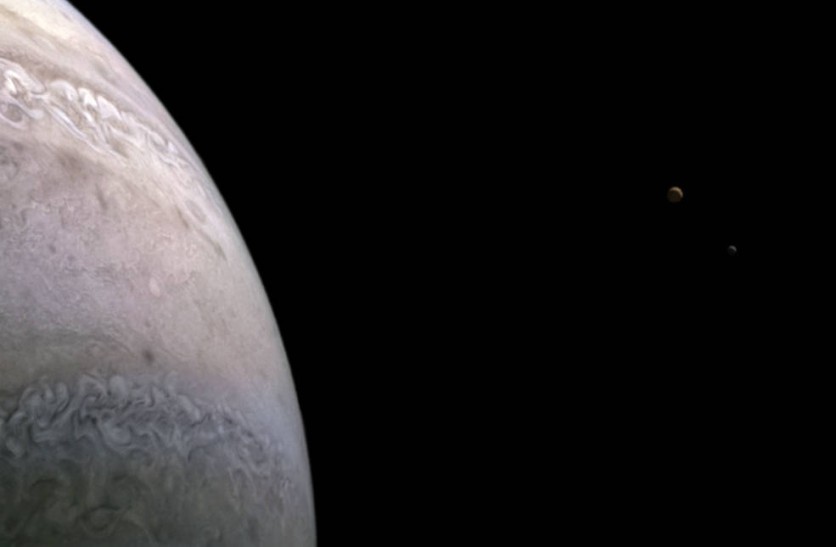
On Sept. 29, a NASA probe will fly roughly 350 kilometers above Jupiter's icy moon--Europa's surface. The spacecraft will aim to take intricate photographs and details of its magnetic fields and ice crust.
NASA to Probe on Europa
NASA's Juno probe is ready to provide scientists with their first close-up view of Jupiter's frozen moon Europa in almost 22 years. This Sept. 29, the mission will fly approximately 350 kilometers over Europa's surface, collecting comprehensive imagery and information on the moon's magnetic fields and ice crust. New Scientist remarks that the last time a spacecraft came near Europa was in January 2000, when NASA's Galileo mission passed 351 kilometers away.
"We've already finished all of the preparations...Everything is on track," Juno mission principal investigator Scott Bolton gushes. He also noted that the team behind the probe is 'beyond excited to get closer to Europa.
Bolton, from the Southwest Research Institute's Space Science & Engineering Division in San Antonio, Texas, has played a key role in these missions. Following his leadership of the Galileo expedition to Jupiter between 1989 and 2003, he was the principal scientist on the Cassini mission, examining Saturn for 13 years until 2017. Currently, he is in charge of the Juno project, which has circled Jupiter since 2016.
Bolton also adds, "Our flyby is rather unique. The part of Europa that we're going to be able to see doesn't have particularly high-resolution data on it from Galileo, so that'll be the first time we've been able to see that region at very high resolution."
What Juno Spacecraft Will Look For
Per NASA-during the quick flyby, all of Juno's scientific sensors will collect data, according to Bolton. JunoCam, the primary camera, will take a few wide-field images, while the stellar reference unit, the navigation camera, will take a single, extremely high-resolution image of a small area of Europa's nightside lighted only by scattered light from Jupiter's cloud tops.
Using Juno's microwave radiometer, NASA aims to get information into Europa's ice shell during the flyby. Bolton compares the instrument to a radar gadget, except that it is passive, so they are looking at emissions from Europa rather than transmitting a signal and observing it bounce off. The data from the radiometer might provide scientists with information on the depth of the shell and identify whether there are broken regions or patches of liquid within the frozen crust.
Bolton's team will also seek evidence of water vapor plumes, which previous studies have shown originate from Europa, but Bolton emphasizes that these features "would have to be going off at the proper moment in a way that we can detect them."
JunoCam's raw photographs are accessible at Mission Juno for the public to study and turn into visual products to share what Juno has discovered on Europa.
Related Article : NASA Hubble Spots Water Vapor in Jupiter's Europa, But One Detail is Weird for Researchers
This article is owned by Tech Times
Written by Thea Felicity
ⓒ 2025 TECHTIMES.com All rights reserved. Do not reproduce without permission.




